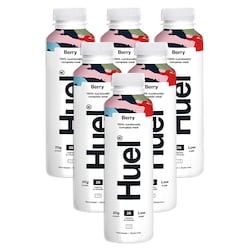15% off £30 OR 20% off £40
What does a yeast infection look like?
.png)
Could it be possible that you have a yeast infection? Are you trying to find out what the symptoms are and what it looks like?
In this article, we talk you through the ins and outs of yeast infections, which are incredibly common, particularly vaginal thrush.
Around three-quarters of women are predicted to experience thrush at some point in their lives. Meanwhile, one in 20 women gets thrush on a regular basis.1
In this article, we will cover
- How to tell if you have a yeast infection – what does it look like?
- What are the symptoms to look out for?
- How can you treat it and prevent it happening in the future?
What is a yeast infection?
People get yeast infections, which are also referred to as candidiasis, when the yeast that’s naturally present on their skin and within their digestive system (Candida Albicans) grows out of control.
As a result, this causes an infection, which is most commonly called a yeast infection.2
It’s possible for yeast infections to develop on all different parts of your body, such as your armpits, groin area, in your mouth and in between your fingers; all areas that are moist and warm and ideal for the yeast to multiply and grow.
Women can also get yeast infections in their vaginal, and men, on their penis.
In these instances, it tends to be called thrush, which isn’t a Sexually Transmitted Infection, but can be extremely uncomfortable, as well as embarrassing. It can keep coming back too.3
What is the main cause of yeast infection?
Several things can lead to you altering the natural balance of candida in your body.
The most common triggers for yeast infections are:
- Pregnancy - increased oestrogen levels throw off the normal balance of yeast and bacteria within the vagina.
- Certain medication - such as hormonal contraceptives (birth control tablets or patches or vaginal rings), antibiotics and steroids.
- Immune-suppressing diseases – such as HIV can weaken your immune defenses, making you more susceptible to getting infections, including yeast infections
- Diabetes – yeast feeds on sugar and, as a result, having high blood sugar levels can lead to higher levels of yeast in the body.
- Obesity – being overweight creates more areas for yeast to thrive, particularly within folds of skin.
- Stress and lack of sleep – due to the fact both of these things can weaken the immune system.
- Eating a high sugar diet – sugar is a main food source for candida, and having too much of it can send your natural yeast levels into overdrive.
- Wearing tight clothing – especially synthetic underwear and clothing that’s tight and prevents your skin from breathing, creating a warm and moist environment for yeast to germinate.4,5
Summary
- Yeast infections, which are also referred to as candidiasis, occur when the yeast (Candida Albicans) that’s naturally present on our skin and within our digestive system grows out of control
- Various things can cause yeast infections, including pregnancy, diabetes, stress, a high sugar diet and wearing tight clothes
How to tell if you have a yeast infection
Yeast infections can look different, depending on where they are on your body and how long you’ve had them for.
When it comes to thrush, some people don’t experience any symptoms at all.6
However, you know your body best.
So if something looks or feels a little different than usual, it’s best you get it checked out by your GP or another medical professional because if it is a yeast infection, it can easily get worse.
Yeast infections also develop and look different from person-to-person.
These NHS images show you what thrush can look like on the penis, in the vagina and generally on an area of skin.
Summary
- Yeast infection symptoms vary from person-to-person
- The length of time you’ve had the infection for and where it is on your body can impact what it looks like
- Not everybody who gets thrush has symptoms
What are the symptoms to look out for?
Yeast infections look different, depending on where they are on your body.
The most common symptoms7 are listed below.
| Body part | Main symptoms |
|---|---|
| Skin folds or navel |
|
| Mouth |
|
| Nails |
|
| Vagina |
|
| Penis |
|
What can be mistaken for a yeast infection?
Thrush can easily be mistaken for other types of infections, mainly due to the fact that the main symptoms (listed above) are very similar to the symptoms for other conditions.8
These other conditions are:
- Chlamydia and gonorrhoea – can also cause discharge. However, it tends to be white or green, and not similar to the consistency of cottage cheese, which is one of the main characteristics of yeast infections.
- Trichomoniasis – can lead to itching, burning and thin discharge that tends to be thinner than the discharge produced by a yeast infection. Trichomoniasis also tends to be accompanied by a fishy smell, which isn’t the case with yeast infections.
- Bacterial vaginosis – is often detected by a discharge that’s grey/white and smells fishy, itching and vaginal burning. The smell and colour of the discharge are clear indicators it isn’t a yeast infection.
- Herpes – can lead to the development of painful genital sores that cause itching and burning that can easily be confused with a yeast infection.
- Allergic reactions – the vaginal area is a sensitive one that’s highly susceptible to being allergic to soaps, creams, latex condoms and many other materials and ingredients. These allergies can cause itching, burning and discharge, which can also be linked to a yeast infection.
Summary
- Yeast infection symptoms are widespread and don’t 100% look the same on everybody
- More common signs include itching, burning, discharge and redness
- It’s easy for yeast infections to be mistaken for other infections, including STIs, as well as allergic reactions
How can you treat it and prevent happening in the future?
Can a yeast infection go away on its own?
Yes, but this isn’t always the case. In some instances, mild infections can go away on their own.
However, the general consensus is they can usually get progressively worse if they aren’t treated.9
Therefore, if you suspect you may have a yeast infection, it’s best you speak to your GP so that they can diagnose it and provide you with treatment, sooner rather than later.
More importantly, it’s always better to get yeast infections professionally diagnosed and treated because they can keep coming back if they aren’t properly tackled in the first instance.
Most yeast infections tend to clear up, with the right treatment, after a week.
What is the fastest way to get rid of a yeast infection?
The quickest way to clear up a yeast infection is to get it diagnosed ASAP. That way, if you do have one, you can take the appropriate course of action.
The most common way of treating these infections is by using anti-yeast and anti-fungal creams.10
In addition to applying topical treatments to the skin, you can also:
- Take anti-fungal supplements – that kill any bad bacteria that’s present in your gut which, in turn, can help overpower the candida. If you are looking for a solution, you may want to consider taking caprylic acid, grapefruit seed extract or berberine supplements.11
- Take probiotics – are valuable for making sure you have the right amount of good vs. bad levels of gut bacteria. Lactobacillus and Bifidobacterium are two examples of good gut bacteria that can be found in probiotics.12
- Change your diet – what you put into your body can directly influence your candida levels, with high sugar, yeast and dairy diets potentially leading to high levels of candida.
There is something called the Candida Diet, which is specifically designed to tackle candida overgrowth.
It involves starving the yeast that’s present in your body by no longer consuming or cutting down your intake of:
- Sugary foods
- Alcohol
- Anything fermented, such as yeast extract, blue cheeses or soy sauce
In the meantime, eating fresh garlic and oregano and cooking with coconut oil, are just three methods for helping tackle candida overgrowth.
For more on the reasons why, read this article, ‘Candida infections: Causes, symptoms and treatments.’
Summary
- Mild yeast infections may go away on their own
- Left untreated, infections can get worse and keep coming back
- Anti-fungal creams and supplements, probiotics and eating less sugar, dairy and yeast can help with tackling yeast infections
A final few words about yeast infections
While they can be uncomfortable and embarrassing, yeast infections are something you shouldn’t ignore.
Not only can they easily be confused with other health conditions, such as STIs, but they are also an infection that can keep returning if they aren’t diagnosed and treated properly from the outset.
The good news is that they do clear up relatively quickly, providing the correct treatment is used, and they are straightforward to treat.
The most important thing is that you seek medical advice as soon as you suspect you may have a yeast infection.
Hopefully, the yeast infection pictures and symptoms featured in this article will help you determine if you have a yeast infection and encourage you to speak to your GP if you think you might have one.
Last updated: 22 February 2022
- https://www.bupa.co.uk/health-information/womens-health/vaginal-thrush#:~:text=Thrush%20is%20an%20infection%20with,repeated%20(recurrent)%20thrush%20infections.
- https://www.hopkinsmedicine.org/health/conditions-and-diseases/candidiasis-yeast-infection
- https://www.nhs.uk/conditions/thrush-in-men-and-women/
- https://www.everydayhealth.com/yeast-infection/guide/
- https://www.everydayhealth.com/yeast-infection/conditions-that-increase-your-risk-for-yeast-infection/
- https://www.nhs.uk/conditions/thrush-in-men-and-women/
- https://www.hopkinsmedicine.org/health/conditions-and-diseases/candidiasis-yeast-infection
- https://www.self.com/story/conditions-that-seem-like-a-yeast-infection
- https://khealth.com/learn/yeast-infection/how-long-does-it-last/#:~:text=on%20all%20day-,How%20Long%20Does%20a%20Yeast%20Infection%20Usually%20Last%3F,to%20contact%20your%20healthcare%20provider.
- https://www.hopkinsmedicine.org/health/conditions-and-diseases/candidiasis-yeast-infection
- https://hormonesbalance.com/articles/top-10-ways-conquer-candida-part-2-food-herbs-supplements-solutions/
- https://hormonesbalance.com/articles/top-10-ways-conquer-candida-part-2-food-herbs-supplements-solutions/



































